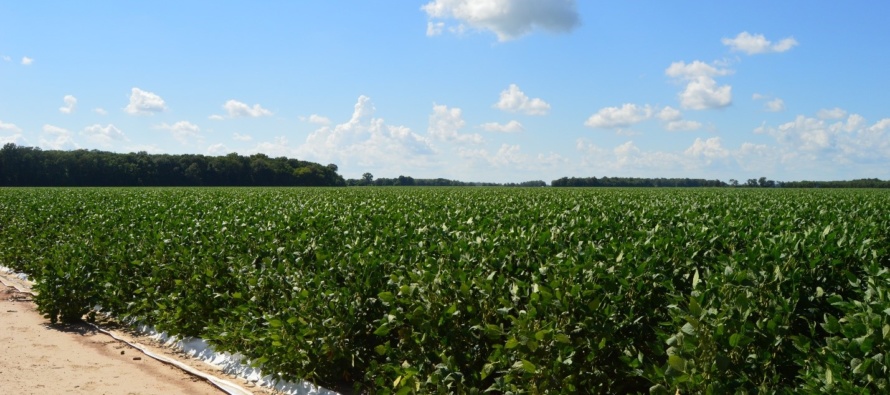Soybean Irrigation Termination

Related Articles
- 2010 Soybean And Corn Variety Trial Data 3
- 2010 Row Crop Short Course Video Links 0
- March Ag Supply and Demand Report Recap 0
Latest Tweets
There is no question that this growing season has had challenges. From acres that were planted late because it remained too wet to acres that didn’t receive rainfall in weeks. Irrigation has been as important as ever this year. There are currently a range of growth stages across the state’s acres with some nearing harvest and some in early reproductive development. However, we have a lot of soybean acres approaching the time to consider irrigation termination. When considering when to terminate irrigation, the most important thing to remember is to maintain adequate soil moisture until the soybean seeds reach maximum size.
With that said, the very first step in deciding when to terminate irrigation is to properly identify what growth stage the crop is in. Keep in mind that if you are growing an indeterminate variety, observations for determining the growth stage should be from pods in the upper four nodes of the plant. For determinate varieties, observations can be anywhere on the plant.
The following points will help in identifying the late reproductive growth stages:
- R5.5 – Pods contain soybeans which fill half the space inside the pod cavity
- R6 – Soybeans completely fill the inside of the pod cavity
- R6.5 – Pod and pod wall beginning to change color. Soybeans inside the pod are separating from the protective membrane within the pod
- R7 – Pod mature in color
R6 Soybean Pod – seed completely filling pod cavity

R6.5 Soybean Pod – seed separated from membrane within pod

The two stages that are the most important to identify for this management decision are R6 and R6.5. Keep in mind that seed touching within the pod does not mean that the crop has reached R6. In order to correctly identify R6, all seed within the pod will completely fill the pod cavity with no space between seed. The expected time from R6 to R6.5 will vary, depending on planting date and maturity group. But, generally speaking, soybean will require 7 to 14 days to transition from R6 to R6.5. The later the planting date, the later the expected date at which the R6.5 growth stage is achieved, so for some of our acres, we still have several days to go to be able to safely terminate irrigation.
If the crop has reached the R6.5 growth stage, when the soybeans have separated from the pod membrane, irrigation can be terminated at this point. In the case of indeterminate varieties, be mindful of the fact that there may be some pods in the lower part of the plant that are approaching R7 while pods in the upper four nodes still need water to finish filling. Terminating irrigation too soon can result in smaller seed and therefore reduce the overall yield potential.
Soil moisture sensors are excellent tools to aid in deciding when to terminate irrigation in soybean. Proper identification of the crop’s growth stage coupled with measurements recorded with a soil moisture sensor can provide the information needed to estimate the time until the crop reaches physiological maturity and the availability of soil moisture up to that point. For example, if the soybean crop is at the R6 growth stage, a timely rainfall or well-timed irrigation event could allow that crop to reach maturity.




Let me tell You a sad story ! There are no comments yet, but You can be first one to comment this article.
Write a comment